It’s been a busy few months for the Summer 2021 recipients of the LAS Dean’s High Impact Award for Undergraduate Research.
The award, earned through a competitive application process, provides funding for students as they collaborate with faculty mentors and carry out leadership roles on important research. A few of these LAS undergraduate summer researchers share what they learned recently about their fields, the research process and themselves.
Tracking superflares
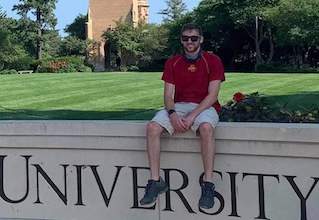
Patrick Stanley, a senior in physics, is on a mission to find the frequency of high energy explosions that happen on the sun and other stars, known as superflares.
“Should a superflare hit the Earth, it could cause enormous electrical damage, as well as shred the ozone, making us more vulnerable to the sun’s ultraviolet radiation,” Stanley said.
Using data from the Kepler Space Telescope, Stanley tracks the frequency of superflares to understand better their mechanisms and how often they occur on the sun.
“The engineers and scientists that create the tools we use for research are truly miracle workers, and the accuracy and resiliency of the instruments they create are the coolest things about this research,” Stanley said.
Measuring the influence of NBA activism
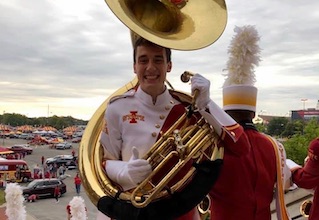
Zachary Johnson, a senior in political science and statistics, is researching the activism performed by NBA players and political activism.
Johnson’s research blends both political science and statistics, exploring whether sports figures can have the same influence as political leaders in determining a person’s political stances.
“The coolest thing about my research is bringing together a novel and interesting dataset,” Johnson said. “It’s been both challenging and rewarding to use Twitter’s API to scrape account information of users that are of interest to our paper.”
Diverse voices in renewable energy
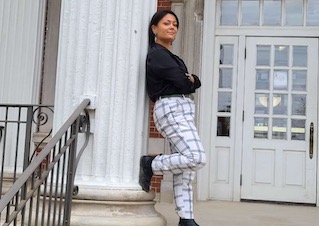
Miranda Tze, a senior in economics, is working with Dara Wald, assistant professor in the Greenlee School of Journalism and Communication, to examine how decision making within energy contexts can be more inclusive of diverse experiences, voices and normative expectations.
“What I love the most about the work I’m doing this summer is how inspiring it is,” Tze said. “Not only am I spending every day finding ways to encourage distributional and procedural justice for renewable energy stakeholders, but I’m learning about myself in the process. I feel rejuvenated when I get to learn and challenge myself, and it’s absolutely incredible.”
Developing matching theory in linear algebra
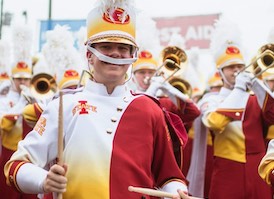
Christopher Kunz, a senior in mathematics, is taking concepts from a recent intermediate abstract algebra class and exploring them beyond the classroom. The summer project aims to develop the theory of matching functions in the context of linear algebra.
“It is neat to see how sophisticated mathematical research builds off of topics learned in the classroom,” Kunz said. “Matching theory is a relatively new topic in mathematics, and a bit of information is known about it in group settings, which are very general algebraic structures. We are trying to create linear analogues of existing group setting theorems and prove them. We hope to have a paper published by the end of the summer.”
Harnessing machine learning for chemistry research

Alex Leffel, a chemistry senior, uses supercomputers to build a large database of highly accurate chemical data for transition metals.
“On top of getting important information about these elements out of the database, we are looking at how we can use new methods like machine learning to make how we conduct research and simulate molecules even more efficient and accurate,” he said.
As a computational chemist, Leffel said he enjoys using the high-performance computers at Iowa State and working with even larger supercomputers in Texas and California.
Understanding gene SERPINE1
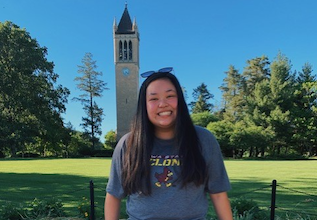
Kristina Ly, a junior in biology, is adding to the understanding of the molecular basis of the effect of the gene SERPINE1. The lab where Ly works is developing a Drosophila melanogaster genetic model to observe effects related to eye development and the brain.
“Working alongside graduate students has helped me learn about a wide variety of other fields of science,” Ly said. “I also enjoyed having the hands-on experience because it gives a good insight on what actual researchers do daily. In addition, besides being taught during the school year, I get more time to spend on focusing and learning in depth about my research.”
Pure mathematics research on matchings
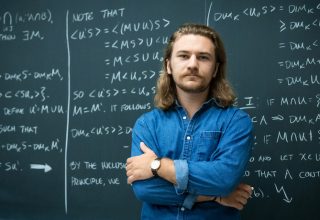
Jack Kinseth, a senior in mathematics, is studying a niche topic in algebra and discrete mathematics called matchings.
“Essentially, a matching is a special type of function that can only exist under rather strict constraints,” Kinseth explained. “Several important results about matchings were proved in the context of groups—abstract algebraic structures that capture and formalize our intuitive notion of symmetry—and we would like to translate these results into the language of other algebraic structures, such as vector spaces and field extensions and motivate potential generalizations of a matching.”
Kinseth said being paid to work on difficult unsolved mathematics problems with colleagues is a dream come true.
“More practically, I enjoy the fact that pure mathematics research does not require a lab,” Kinseth said. “I can work on a math problem while having a cup of coffee outside on the balcony and keep it in the back of my mind while doing other activities like skateboarding or running, though I tend to be most productive working in Carver Hall.”
Furthering gender representation of women in music education research
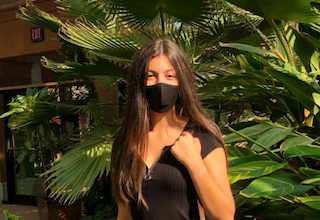
Little research exists regarding gender representation within the field of elementary and early childhood music scholarship across peer-reviewed journals, said Kaliopi Katsiris, a sophomore in music.
Katsiris is examining the Journal of Research in Music Education and the Bulletin of the Council for Research in Music Education from the early 1950s to today for the inclusion of early childhood music scholarship and elementary general music scholarship contributed by women.
” I get to be a part of something meaningful and interesting to me,” Katsiris said. “I feel very privileged to be involved in research that can help the future of women in elementary music education.”
Modeling genetic factors associated with cancers
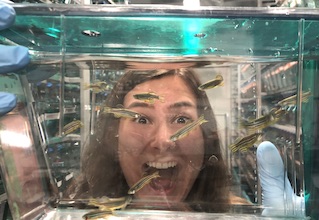
Anna Scott, a psychology senior, uses zebrafish and CRISPR/Cas9 genome editing to model genetic factors associated with certain cancers.
“The professors, graduate students, technicians and others in the lab are the absolute best,” Scott said. “They are incredibly bright, innovative and make the environment so conducive to learning. There is a big learning curve and a lot of trial and error, but it’s all part of the process and they make it feel so manageable!”
Using zebrafish embryos to study brain cancer mutations
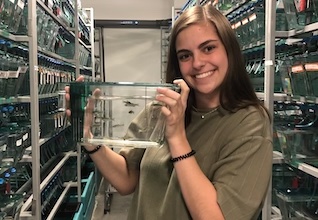
Emma Miller, junior in genetics, is researching the Tp53 tumor suppressor gene and one of its frequent brain cancer mutations. The research injects single-cell zebrafish embryos with wildtype and mutant mRNAs and quantifies cell proliferation.
“It is really helpful to take the concepts I’ve learned in class and perform procedures related to them in a real-life setting,” Miller said. “The hands-on experience is especially great after a year of remote learning!”
Improving vocal music education for children
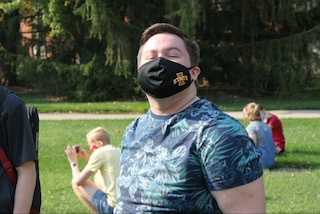
Sean Lockard, a senior in music, is quantitatively measuring the register shifts in children’s voices by using spectrograms to provide an aural and visual representation of the shifts.
“I get to learn more about the field of music and help contribute to the information that we already have about the field,” Lockard said. “Analyzing this information will help teachers to train child singers more successfully.”
Analyzing bacteriophages
Tiffany Geistkemper, a senior in mathematics, is creating a theoretical model to analyze the DNA modifications of a specific bacteriophage, a virus for bacteria, by a certain enzyme to determine more information about this enzyme.
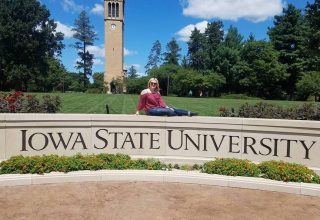
“Bacteriophages and enzymes are important to study because of their various roles in antibiotic resistance, their ability to distinguish between bacterial species for clinical testing and much more,” Geistkemper said. “I’m grateful to be working on such an impactful project, and I hope it leads me to more research opportunities in the future!”
Geistkemper said the best part of the project is applying class knowledge to real-world situations that impact the scientific community.
“In addition, I get to make exciting connections with professionals in this field and work with a great professor. Thank you, Dr. Karin Dorman!”
Examining RNA extraction in bees
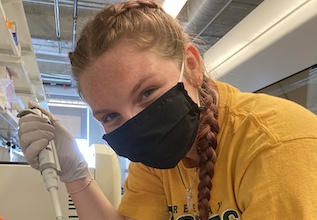
Kelsey O’Brien, junior in genetics, is examining RNA extraction methods for RNA-seq technologies with the sample species of bees.
“I think the coolest part of my research is getting to be a part of a bigger lab setting,” O’Brien said. “I get support not only from my mentors but others in the lab, including postdocs and peers. Everyone wants to support you and help you achieve your goals!”